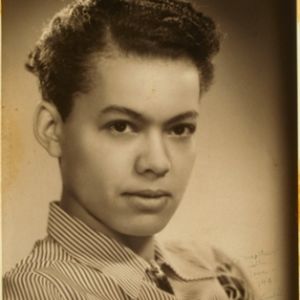
Murray applied to the University of North Carolina in 1938, but was rejected because of her race; all schools and other public facilities in the state were segregated. The case was broadly publicized in both white and black newspapers. Murray wrote to officials ranging from the university president to President Roosevelt, releasing their responses to the media in an attempt to embarrass them into action. The NAACP was initially interested in the case, but later declined to represent her in court, perhaps fearing that her long residence in New York state weakened her case. NAACP leader Roy Wilkins opposed representing her because Murray had already released her correspondence, which he considered “not diplomatic”. Concerns about her sexuality may also have played a role in the decision; Murray often wore pants rather than the customary skirts of women and was open about her relationships with women.
In early 1940, Murray was walking the streets in Rhode Island, distraught after “the disappearance of a woman friend.” She was taken into custody by police. She was transferred to Bellevue Hospital in New York City for psychiatric treatment. In March, Murray left the hospital with Adelene McBean, her roommate and girlfriend, and took a bus to Durham to visit her aunts.
In Petersburg, Virginia, the two women moved out of the broken seats in the black (and back) section of the bus, where state segregation laws mandated they sit, and into the white section. Inspired by a conversation they had been having about Gandhian civil disobedience, the two women refused to return to the rear even after the police were called, and they were arrested and jailed. Murray and McBean were initially defended by the NAACP, but when the pair were convicted only of disorderly conduct rather than violating segregation laws, the organization ceased to represent them. The Workers’ Defense League (WDL), a socialist labor rights organization that was also beginning to take civil rights cases, paid her fine. A few months later the WDL hired Murray for its Administrative Committee.
With the WDL, Murray became active in the case of Odell Waller, a black Virginia sharecropper sentenced to death for killing his white landlord, Oscar Davis, during an argument. The WDL argued that Davis had cheated Waller in a settlement and as their argument grew more heated, Waller had shot Davis in legitimate fear of his life. Murray toured the country raising funds for Waller’s appeal. She wrote to First Lady Eleanor Roosevelt on Waller’s behalf. Roosevelt in turn wrote to Virginia Governor James Hubert Price, asking him to guarantee that the trial was fair; she later persuaded the president to privately request Price to commute the death sentence. Through this correspondence, Murray and Eleanor Roosevelt began a friendship that would last until the latter’s death two decades later. Despite the WDL’s and Roosevelts’ efforts, however, the governor did not commute Waller’s sentence. Waller was executed on July 2, 1942.
Murray’s trial on charges stemming from the bus incident and her experience with the Waller case inspired a career in civil rights law. In 1941, she began attending Howard University law school. Murray was the only woman in her law school class, and she became aware of sexism at the school, which she labeled “Jane Crow”—alluding to Jim Crow, the system of racial discriminatory state laws oppressing African Americans. On Murray’s first day of class, one professor, William Robert Ming, remarked that he did not know why women went to law school. She was infuriated.
In 1942, while still in law school, Murray joined the Congress of Racial Equality (CORE). That year she published an article, “Negro Youth’s Dilemma,” that challenged segregation in the US military, which continued during World War II. She also participated in sit-ins challenging several Washington, D.C. restaurants with discriminatory seating policies. These activities preceded the more widespread sit-ins during the civil rights movement of the 1950’s and 1960’s.
Murray was elected Chief Justice of the Howard Court of Peers, the highest student position at Howard, and in 1944 she graduated first in her class. Men who graduated first in the class were awarded Julius Rosenwald Fellowships for graduate work at Harvard University, but that university did not accept women. Murray was rejected despite a letter of support from President Roosevelt. She wrote in response, “I would gladly change my sex to meet your requirements, but since the way to such change has not been revealed to me, I have no recourse but to appeal to you to change your minds. Are you to tell me that one is as difficult as the other?”
She did post-graduate work at Boalt Hall School of Law at University of California, Berkeley. Her master’s thesis was The Right to Equal Opportunity in Employment, which argued that “the right to work is an inalienable right”. It was published in the California Law Review produced by the school.
After passing the California bar exam in 1945, Murray was hired as the state’s first black deputy attorney general in January of the following year. That year, the National Council of Negro Women named her its “Woman of the Year;” Mademoiselle magazine did the same in 1947.
In 1950, Murray published States’ Laws on Race and Color, an examination and critique of state segregation laws throughout the nation. She drew on psychological and sociological evidence as well as legal, an innovative discussion technique for which she had previously been criticized by Howard professors. Murray argued for civil rights lawyers to directly challenge state segregation laws as unconstitutional, rather than trying to prove the inequality of so-called “separate but equal” facilities, as was done in some challenges.
